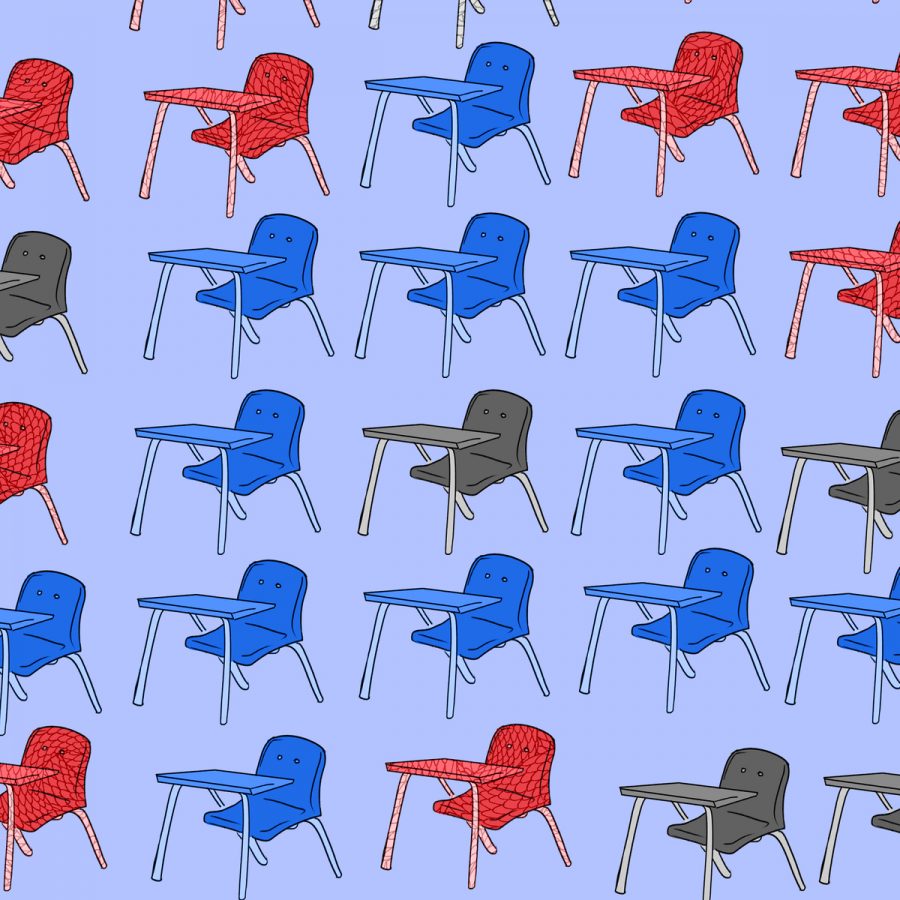UT will only notify close contacts in classes with positive COVID-19 cases, leaving students concerned
October 4, 2021
Some UT students say they are more nervous to visit campus knowing they may not be notified of a positive COVID-19 case in one of their classes.
The University announced Sept. 23 that UT will only notify close contacts of positive cases in classrooms, residence halls and student organizations.
Terrance Hines, University Health Services chief medical officer and executive director, said UHS made the change because the weekly guidance given to the community has the same effect as notifying an entire class or residence hall.
“When (the notification process) started at the very beginning of the pandemic, there was a lot less knowledge about COVID-19,” Hines said. “So many behaviors have become normative now, things like wearing masks and washing your hands and participating in (proactive community testing).”
However, some students wish the notifications would continue regardless. Social work junior Andrea Hernandez said she would prefer to have the option of knowing if someone in one of her classes tested positive for COVID-19.
“There’s no reason to change how the notification system was, and to be honest, that kind of made me feel a little bit more hesitant to go on campus,” Hernandez said. “What if someone that I was like sitting next to or walked close to in class got COVID, and I didn’t know it? And then maybe I could spread it to others.”
UT will still notify close contacts, which the Center for Disease Control defines as someone who has been six feet or closer to a positive case for more than 15 minutes in a 24 hour period.
Hines said the change will not impact contact tracing efforts. The email sent to the community said rolling back notifications will allow UHS to divert resources to contact tracing and increased testing capacity.
UHS is able to track close contacts through systems such as classroom seating charts, Hines said. Contact tracing teams assume close contacts are students who are in close proximity based on the seating charts. Teams also reach out to positive cases to determine who they have been around in classes or social settings.
At the beginning of the semester, the University advised professors that they needed to keep track of where students were sitting in classes to help with contact tracing, but how professors are enforcing that varies.
“In classrooms with fixed seating, (close contacts are) much clearer than in classrooms with non-fixed seating,” Hines said. “(Contact tracers) might pick the closest circles, and then, in doing the case investigation, reach out to those people and ask, ‘Do you remember on this date, were you sitting right next to this person or were you sitting six feet away?’”
Hines said part of the reason UHS decided to limit notifications was to avoid unnecessary alarm for some students because the old notification system did not specify how close a student was to the person who tested positive.
“We’ve heard that it creates alarm fatigue, and that some people are tired of getting these messages,” Hines said. “And we’ve also worried that in some cases, it creates a false sense of security that individuals may say, ‘Well I’ve never gotten one of those emails, so I’m totally safe.’”
Business freshman Saniya Muzumdar said the changed policy has made her nervous to go to class, especially given that she has health conditions that put her at risk.
“I think (the new policy) is really detrimental to the UT campus,” Muzumdar said. “I would just like the option to know because it’s so much better to go get a test done then rather not know and just be oblivious.”



